The History Of Lincoln

Lincoln is a brand of Ford Motor Company. Founded in 1917 by Henry M. Leland and acquired by Ford in 1922, Lincoln has manufactured vehicles since the 1920s. Leland named the brand after his longtime hero Abraham Lincoln.
The company was founded in August 1917 by Henry M. Leland, one of the founders of Cadillac (originally the Henry Ford Company). He left the Cadillac division of General Motors during World War I and formed the Lincoln Motor Company to build Liberty aircraft engines with his son Wilfred. After the war, the company's factories were retooled to manufacture luxury automobiles.
The company encountered severe financial troubles during the transition, coupled with body styling that wasn't comparable to other luxury makers, and after having produced only 150 cars in 1922, was forced into bankruptcy and sold for USD $8,000,000 to the Ford Motor Company on February 4 1922, which went to pay off some of the creditors. The purchase of Lincoln was a personal triumph for Henry Ford, who had been forced out of his second (after Detroit Automobile Company) company by a group of investors led by Leland. Ford's company, renamed Cadillac in 1902 and purchased by rival General Motors in 1909, was Lincoln's chief competitor. Lincoln quickly became one of America's top selling luxury brands alongside Cadillac and Packard. Ford made no immediate change, either in the chassis or the V-8 L-head engine which was rated 36.4 SAE and produced 90bhp (67kW; 91PS) at 2,800 rpm. An unusual feature of this power unit was the 60 degree separation of the cylinder blocks that helped to cut down on synchronous vibration found with similar engines with 90 degree separation produced at the time. After the Ford takeover, bodywork changes and reduced prices increased sales to 5,512 vehicles from March to December of 1922.
In 1923, several body styles were introduced, that included two- and three-window, four door sedans and a phaeton that accommodated four passengers. They also offered a two passenger roadster and a seven passenger touring sedan and limousine, which was sold for $5,200. A sedan, limo, cabriolet and town car were also offered by coachbuilders Fleetwood, and a second cabriolet was offered by coachbuilder Brunn. Prices for the vehicles built by these coachbuilders went for as much as $7,200, and despite the limited market appeal, Lincoln sales rose about 45 percent to produce 7,875 cars and the company was operating at a profit by the end of 1923.
1924 saw the introduction of large touring sedans used by police departments around the country. They were known as Police Flyers, which were equipped with four wheel brakes, two years before they were introduced on private sale vehicles. These specially equipped vehicles, with bullet proof windshields measuring 7/ 8 of an inch thick and spot lights mounted on the ends of the windshield, also came with an automatic windshield wiper for the driver and a hand operated wiper for the front passenger. Police whistles were coupled to the exhaust system and gun racks were also fitted to these vehicles.
Optional equipment wasn't necessarily an issue with Lincolns sold during the 1920s, however, customers who wanted special items were accommodated. A nickel plated radiator shell could be installed for $25, varnished natural wood wheels were $15, or Rudge-Whitworth center-lock wire wheels for another $100. Disteel steel disc wheels were also available for $60. Lincoln chose not to make yearly model changes, used as a marketing tool of the time, designed to lure new customers. Lincoln customers of the time were known to purchase more than one Lincoln with different bodywork, so changing the vehicle yearly was not done to accommodate their customer base. In 1927, Lincoln adopted the greyhound as their emblem, which was later replaced with diamond that is currently in use.
In 1932, Lincoln introduced the V12-powered KB. The same year, Eugene T. "Bob" Gregorie (1908-2002), at the styling studio created by Edsel Ford, began designing what became the Continental, eventually the most important car made by Lincoln. It started as a one-off project car for Edsel, who wanted a European-style car unlike the boxier designs his father's company produced, to drive around on vacations in Florida.
The Zephyr gave Gregorie his chance. Introduced for the 1936 model year, the sportier Zephyr featured a 4.4 liter (267in³) V12, and was so successful it almost became a brand name, rather than just a model. Its first year increased Lincoln sales almost nine-fold. Gregorie simply sectioned a 1938 Zephyr Coupé 10cm (4"), allowing most of the existing dies and tooling to be retained (a trick that would be repeated in the 1953 Buick Skylark), adding the hallmark vertically-mounted spare tire. This became the Continental, eventually the most important car made by Lincoln; by the time it ended production in 1948, 5322 were built, almost entirely by hand. The Zephyr, on which it was based, stopped production in early 1942 when Ford converted to war work, and was not revived. The Continental's spare tire mount was so distinctive, those who work on custom cars still call adding a similar mount a "Continental kit".
The Continental Mark II revived the concept. It was produced by the short-lived Continental division from April 1955 to July 1956 before it was returned to the Lincoln marque. The Mark II had a basic list price of $10,000, the same as a Rolls-Royce that year. The Edsel division merged with Lincoln-Mercury in January 1958 to form the Mercury-Edsel-Lincoln division until the Edsel was discontinued in 1960.
The Continental became Lincoln's flagship model until 1981 when the Town Car, previously the Continental's top trim level, became its own model and took over that role.
As recently as 1998 Lincoln was the best-selling luxury brand in the United States, helped by the massive success of the Navigator SUV, and a redesign of the Town Car as well as the Continental. The company was also part of the Premier Automotive Group from 1998 to 2002, but was pulled out due to Ford's new marketing strategy to separate its "import" brands from its domestic marques. In recent years, however, the company has fallen behind Japanese, European, and American competitors for a lack of new models. The company is working to remedy this, however, and is sharing parts and platforms with other Ford divisions worldwide in an attempt to bring more new models to market faster. The company promises five new models in the four years 2004-2008, and has already begun with the new 2006 Mark LT pickup, Zephyr (upgraded and renamed Lincoln MKZ for the 2007 model year) and the MKX Crossover SUV.
Lincoln vehicles are currently officially available in the United States, Canada, Mexico, Puerto Rico, U.S. Virgin Islands, Guam, American Samoa, Northern Mariana Islands, China, South Korea, and the Middle East.
Lincoln had a long history of providing official state limousines for the U.S. President. The first car specially built for Presidential use was the 1939 Lincoln V12 convertible called the "Sunshine Special" used by Franklin D. Roosevelt. It remained in use until 1950.
A 1950 Lincoln Cosmopolitan called the "Bubble Top" was used by Presidents Truman, Eisenhower, Kennedy and once by Johnson. It was retired in 1965.
The Kennedy car was a 1961 Lincoln Continental convertible, custom built by Hess and Eisenhart of Cincinnati, and known as the SS-100-X. The Secret Service had the car fitted with a 1962 grill for aesthetic reasons. It was in use from 1961 to 1977, having undergone extensive alterations which made it an armor-plated sedan after Kennedy's assassination. A 1969 Lincoln was used by Nixon and a 1972 Lincoln used by Presidents Ford, Carter, Reagan and Bush. A 1989 Lincoln was the last Presidential Lincoln as of 2004. Cadillac supplied Presidential limousines in 1983, 1993, 2001, and 2004.
The John F. Kennedy limousine also included a Plexiglas bubble top to be used in the event of inclement weather. The 1961 vehicle was notorious for its inadequate cooling of the rear of the passenger cabin while the bubble top was in place, particularly in sunshine. In order to prevent excessive heat and discomfort to the passengers, the top was often removed prior to parades, as was the case in Dallas on November 22, 1963.
Though it was always assumed that President Lyndon Baines Johnson had the car destroyed after the assassination of President Kennedy,[citation needed] the 100-X was turned over to the Secret Service, Army Materials Research Center, Hess & Eisenhart, Pittsburgh Plate Glass Company, and Ford Motor Company for retrofitting of armor plating, permanent sedan roof, new interior, improved air-conditioning system, electronic communications equipment, bulletproof glass, a new paint treatment and cosmetic alterations to remove damage incurred during the assassination, among other changes. The car is also on display at the Henry Ford Museum.
The Johnson Administration also used three 1965 Lincoln Continental Executive Limousines. Two limousines for the President and one for Secretary of Defense Robert McNamara, as well as a 1968 "stretch" Lincoln to be used in Washington, D.C., and Austin, Texas. This vehicle is on display at the Lyndon Baines Johnson Library and Museum.
The 100-X was modified again in 1967. Later, under President Richard Nixon, the large one-piece glass roof was replaced with a smaller glass area and a hinged roof panel. It remained in service until 1977 and resides in its final configuration at the Henry Ford Museum.
President Nixon ordered a 1969 model limousine, through Lehman-Peterson of Chicago. This vehicle also had an added sunroof so that Nixon could stand upright when appearing before parade-goers if desired. This vehicle was equipped with several features, such as retractable hand grips and running boards, options later copied by Hess and Eisenhart. This car is now located at the Nixon Library in Yorba Linda, California.
In 1974, Ford supplied a 1972 Continental model which was stretched to 22 ft (7 m), outfitted with armor plating, bullet resistant glass and powered by a 460 in³ (7.5 l) V8 engine. This limousine was used by Presidents Gerald Ford, Jimmy Carter and Ronald Reagan, and is on display at the Henry Ford Museum. This model was also altered a number of times during its history, including a full body redesign in 1979. This was the limousine that Reagan was about to enter during his assassination attempt in 1981.
Website of Lincoln Presidential Limousines
Current and near future models
Lincoln is currently switching to a new naming system. Most Lincoln models will be given a three-letter name beginning with "MK" starting in 2007. The Navigator and Town Car name will remain, but all other models are expected to use this convention by the end of the decade.
- Lincoln MKT (2010-)
- Lincoln MKS (2009-)
- Lincoln MKX (2007— )
- Lincoln MKZ (2007— )
- Lincoln Navigator (1998— )
- Lincoln Town Car (1981— )
Recent models
- Lincoln LS (2000–2006)
- Lincoln Aviator (2003–2005)
- Lincoln Blackwood (2002)
- Lincoln Continental (1961–2002)
- Lincoln Mark Series (1956–1998)
- Lincoln Zephyr (2006)
- Lincoln Mark LT (2006—2008)
Historical
- Lincoln L-series (1920–1930)
- Lincoln K-series (1931–1939)
- Lincoln-Zephyr (1936–1942), a car line priced between Ford and Lincoln
- Lincoln-Zephyr Continental (1940–1942, 1946–1948), later Lincoln Continental
- Lincoln Custom (1941–1942)
- Lincoln (no other name) (1946–1951)
- Lincoln Sport (1949–1951)
- Lincoln Cosmopolitan (1949–1954)
- Lincoln Lido (1950–1951)
- Lincoln Custom (1955)
- Lincoln Capri (1952–1959)
- Lincoln Premiere (1956–1960)
- Lincoln Versailles (1977–1980)
Concept cars
- Lincoln Continental 1950-X (1952)
- Lincoln Anniversary (1953)
- Lincoln Maharaja (1953)
- Lincoln XL-500 (1953)
- Lincoln Mardi Gras (1954)
- Lincoln Premiere (1955)
- Lincoln Futura (1955)
- Lincoln Indianapolis(1955)
- Lincoln Continental Town Sedan (1965, 1969)
- Lincoln Coronation Coupe (1966)
- Lincoln Coronation II (1967)
- Lincoln Mark III Dual Cowl Phaeton (1970)
- Lincoln Continental Concept 90 (1982)
- Lincoln Continental Concept (1983)
- Lincoln Quicksilver (1985-1986)
- Lincoln Continental Next Generation Mark (1986-1987)
- Lincoln Vignale (1987)
- Lincoln Machete (1988)
- Lincoln Marque X (1992)
- Lincoln L2K (1995)
- Lincoln Sentinel (1996)
- Lincoln Special LS (1999)
- Lincoln Mark 9 (2001)
- Lincoln Continental Concept (2002)
- Lincoln Navicross (2003)
- Lincoln Aviator concept (2004)
- Lincoln Mark LT concept (2004)
- Lincoln MK9 concept (2004)
- Lincoln Mark X concept (2004)
- Lincoln MKS concept (2006)
- Lincoln MKR concept (2007)
- Lincoln MKT concept (2008)
- Lincoln C concept (2009)
From Wikipedia, the free encyclopedia
More About Lincoln

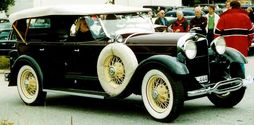

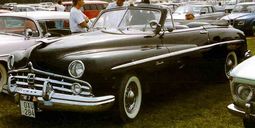
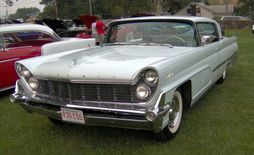
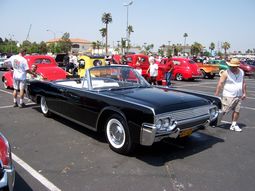
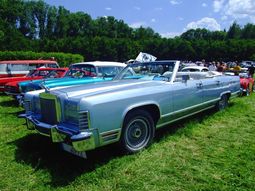
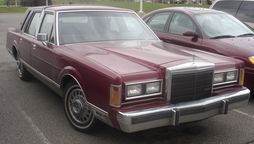
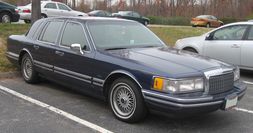
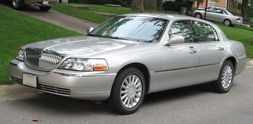
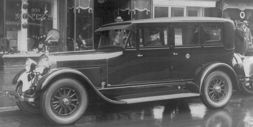
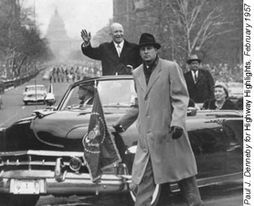

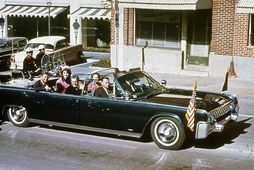
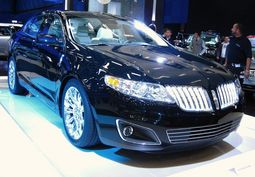
|